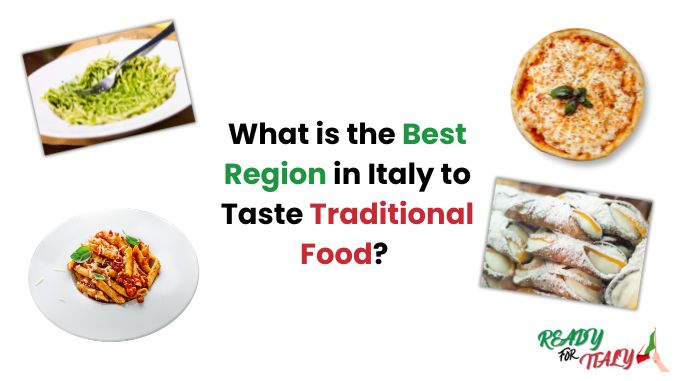Italy is divided into 20 regions, each with its own unique culture, cuisine, history and sights. The Italian regions are further grouped into five main geographical areas – Northwest, Northeast, Central, South, and the Islands. Italy’s regions showcase the country’s diversity, from the Alpine peaks of the north to the warm southern beaches. Getting to know each of Italy’s regions provides a better understanding of the country as a whole.
Around 64 million tourists visit Italy each year, making it one of the most popular tourist destinations in the world. The rich history, art, food, and scenery make Italy’s regions highly attractive to both domestic and international travelers. In Italy there are 5 regions with special autonomous status with additional legislative and administrative powers compared to ordinary status regions.
How many regions are in Italy?
There are 20 regions in Italy: 5 regions have special autonomous status, 15 regions have ordinary status.
The autonomous regions were granted special status to recognize their cultural differences and geographic isolation from the rest of Italy. These regions have more legislative, administrative, and financial autonomy compared to ordinary status regions.
What are the Autonomous regions with special statute in Italy?
Italy has 5 autonomous regions with special statute granting them additional powers:
- Aosta Valley – Special statute since 1948 due to small size, geographic isolation, and French ethnic minority.
- Friuli-Venezia Giulia – Special statute since 1963 due to Slovenian minority and border with Slovenia.
- Sardinia – Special statute since 1948 due to island geography and historic political autonomy.
- Sicily – Special statute since 1946 due to island geography, distance from Rome, and unique cultural identity.
- Trentino-Alto Adige/Südtirol – Special statute since 1972 to protect the German-speaking minority in South Tyrol.
The special statute allows these regions more independence over areas like taxes, education, language, and police. The statutes help preserve their unique cultural identities.
What are the Italian Regions with ordinary statute?
15 Italian regions have ordinary statutes. This means they have basic powers over areas like agriculture, tourism, public works, social programs, and regional policing. Ordinary statute regions of Italy are:
- Piedmont
- Liguria
- Lombardy
- Emilia-Romagna
- Veneto
- Marche
- Tuscany
- Umbria
- Lazio
- Abruzzo
- Molise
- Campania
- Apulia
- Basilicata
- Calabria
These regions were established between 1970 and 1980 to replace the historical regions. They have less autonomy than the special statute regions.
What are the Northern Italian regions?
Northern Italian regions consists of 8 regions. Northern Italy is a geographical and cultural area encompasses 8 regions that are collectively known for their diverse landscapes, rich history, and significant economic contributions. The 8 regions that make up Northern Italy are:
- Piedmont
- Aosta Valley
- Liguria
- Lombardy
- Emilia-Romagna
- Veneto
- Friuli-Venezia Giulia
- Trentino-Alto Adige/Südtirol
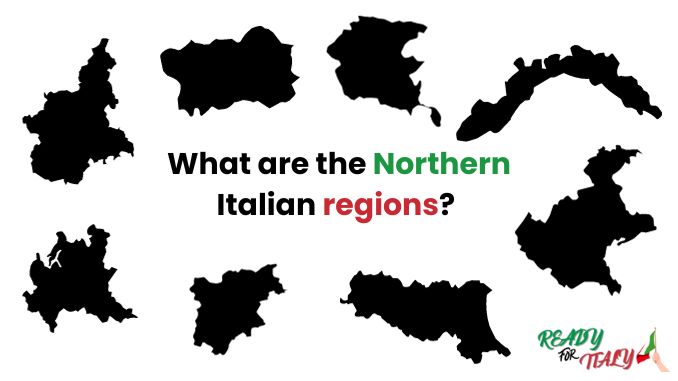
These 8 regions collectively form Northern Italy and are characterized by their economic robustness, with industries ranging from finance and fashion in Lombardy to automotive and agriculture in Emilia-Romagna. Northern Italy’s diverse geography, from the Alpine peaks to the coastal areas of Liguria, adds to its appeal as a tourist destination. Each region within Northern Italy maintains its unique identity while contributing to the cultural and economic fabric of Italy.
The northern regions of Italy are distinguished by their proximity to the Alps and their cuisines, which include rice, polenta, butter, and cheeses. These mountainous areas provide excellent skiing and hiking opportunities. Northern Italian regions are also known for fashion centers like Milan and automotive brands like Ferrari.
What are the Northwest Italian regions?
The Northwest regions of Italy are:
- Aosta Valley
- Liguria
- Lombardy
- Piedmont
Aosta Valley
The Aosta Valley is the smallest region in Italy. Aosta Valley is a region in northwest Italy with an area of approximately 3,263 square kilometers. Aosta Valley is the least populous region of Italy, with a population of about 125,666 residents as of the latest census data. Aosta Valley region, situated in the Alpine region, is characterized by its mountainous terrain, including parts of the Mont Blanc and Matterhorn peaks, which significantly influence its geography and climate. Tourism is centered around mountain sports like skiing, hiking, and climbing. The city of Aosta contains Roman ruins and medieval sites. Regional cuisine of Aosta region features Fontina cheese, meat dishes, and rye bread.
Liguria
Liguria is a coastal region in northwestern Italy with an area of approximately 5,422 square kilometers. The Liguria region border with France to the west, Piedmont to the north, and Emilia-Romagna and Tuscany to the east. Liguria has a population of 1.55 million people, as per the most recent census data. This population is unevenly distributed across its territory, with a significant proportion residing in the coastal areas, particularly in and around the region’s capital, Genoa. The Liguria region, it is known for its picturesque coastline along the Ligurian Sea, forms part of the Italian Riviera. Liguria stretches along the Mediterranean Sea, known for its beaches and seaside resorts. The city of Genoa has a historic port and is famous for pesto sauce. The scenic Cinque Terre villages are also popular tourist destinations located in Liguria.
Lombardy
Lombardy is on of the largest regions in Italy with an area of approximately 23,844 square kilometers. Lombardy is situated in northern Italy, sharing borders with Switzerland to the north, the regions of Trentino-South Tyrol and Veneto to the east, Emilia-Romagna to the south, and Piedmont to the west. Lombardy is the most populous region in Italy, with a population of around 10 million people. This accounts for about one-sixth of Italy’s total population. Milan is the capital region and it is the center of fashion, finance, and industry in Italy. Other major cities of Lombardy region are Bergamo, Brescia, Como, and Mantua, which contain historic architecture and art. Lombardy is known for its natural beauty, including Lake Como and the Alps.
Piedmont
Piedmont is the second-largest region in Italy by area. The total area of Piedmont region is 25.387 square kilometers. Piedmont is located in the northwestern part of Italy, bordering both France and Switzerland. Piedmont has a population of approximately 4.4 million people. This population size ranks Piedmont as one of the more populous regions in Italy. The demographic distribution is concentrated in urban areas, with Turin, the regional capital, being the largest city and a major cultural and economic center. Turin, the capital of Piedmont region of Italy, was the former seat of the royal House of Savoy. Piedmont is regarded for its wine, truffles, cheeses, and Fiat headquarters. Popular tourist destinations include Lake Maggiore, the hilltop village Orta San Giulio, and the historic city of Alba.
What are the North-East Italian regions?
The North-East regions of Italy include:
- Emilia-Romagna
- Friuli-Venezia Giulia
- Trentino-South Tyrol
- Veneto
Emilia-Romagna
Emilia Romagna is a region in northern Italy with an area of 22,446 square kilometers. Emilia Romagna is geographically located in the north-East part of Italy, extending from the Po River in the north to the Apennine Mountains in the south. Emilia Romagna shares borders with the regions of Lombardy, Veneto, Tuscany, Liguria, Marche, and the independent state of San Marino. Emilia Romagna has a population of around 4.4 million people, ranking it 6th among the most populous regions in Italy according to statista.com. The capital city of Emilia Romagna region is Bologna. Other major cities of Emilia Romagna are: Modena, and Parma. The area of Emilia Romagna plays a vital role in its agricultural productivity, particularly in the cultivation of renowned Italian food products and wines. Bologna is the capital of the Emilia-Romagna region and home to the oldest university in the Western world. The region has popular beach resorts along the Adriatic coast, like Rimini. Emilia-Romagna is known as a culinary center famous for Parmigiano-Reggiano cheese, prosciutto ham, tortellini pasta, and balsamic vinegar.
Friuli-Venezia Giulia
Friuli Venezia Giulia is a region in the northeastern part of Italy, and it cover an area of approximately 7,858 square kilometers. Friuli Venezia Giulia is located in the northeastern corner of Italy, bordering Austria to the north, Slovenia to the east, and the Adriatic Sea to the south. The region also shares internal boundaries with the Italian regions of Veneto and Trentino-Alto Adige. Friuli Venezia Giulia has a population of around 1.2 million people. The total population size of Friuli Venezia Giulia ranks 15th according to data of Resident population of Italy in 2023, by region of statista.com. The capital city of Friuli Venezia Giulia is Trieste. Located on the Adriatic coast near the Slovenian border, Trieste city known for its diverse cultural influences and historical landmarks, including Piazza Unità d’Italia and Miramare Castle. The city is an important center for commerce, culture, and education in the region. The region features Venetian-style seaside resorts and is known for San Daniele del Friuli prosciutto and Friulano white wine.
Trentino-South Tyrol
Trentino-South Tyrol is an autonomous alpine region with mostly German-speaking and Ladin minority populations. The Dolomites mountain range attracts skiers and hikers. Trentino’s capital, Trento, combines Austrian and Italian influences. South Tyrol was part of Austria-Hungary until 1918 and retained a strong Austrian identity.
Veneto
Veneto’s most popular city is Venice, built on over 100 small islands in the Venetian Lagoon. Other destinations include Verona, the setting of Shakespeare’s Romeo and Juliet, and the Palladian villas of the Veneto countryside. Veneto is known for wines such as Amarone and Prosecco.
What are the Central Italian regions?
The central regions of Italy consist of:
- Lazio
- Marche
- Tuscany
- Umbria
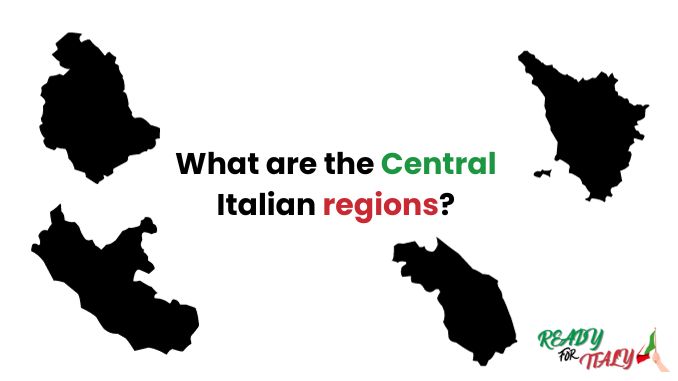
Lazio
Lazio has Rome as its capital, known for ancient Roman sites like the Colosseum and Forum, as well as the Vatican City. Other major Lazio cities include Anzio and Frosinone. Lazio region has popular beach destinations along the coast north of Rome, like Santa Marinella.
Marche
The Marche region is located along the Adriatic Sea containing historic coastal and hilltop towns. Marche has seen fewer foreign visitors compared to other Italian regions, giving it a more authentic atmosphere. Popular destinations include Urbino, Ascoli Piceno, and the Sibillini Mountains.
Tuscany
Tuscany is renowned for its landscapes, history, and cultural legacy. Florence was the center of Renaissance art and architecture, home to Michelangelo and the Medicis. Other major Tuscan cities are Siena, Pisa, Lucca, and Arezzo. Tuscany is also prized for its Chianti wine region and countryside dotted with cypress trees and olive groves.
Umbria
Umbria lies inland adjacent to Tuscany, known as Italy’s “Green Heart” for its verdant hills and forests. The main cities are Perugia and Assisi, the birthplace of St. Francis. Umbria has fewer tourists than Tuscany, exemplified by quiet rural villas and medieval hill towns like Spoleto, Orvieto, and Todi.
What are the South Italian regions?
The southern regions of Italy consist of:
- Abruzzo
- Apulia
- Basilicata
- Calabria
- Campania
- Molise
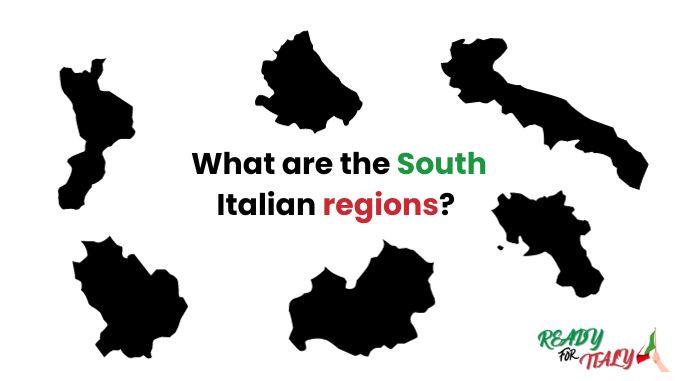
Southern Italy offers superb beaches, ancient Greek and Roman sites, colorful villages perched on hillsides, and warm Mediterranean cuisine. The economy of the south traditionally depended more on agriculture and less on industry compared to northern Italy.
Abruzzo
Abruzzo has a long Adriatic Sea coastline dotted with sandy beaches. Inland are the Apennine Mountains and hill towns, as well as national parks like Abruzzo, Lazio, and Molise National Park. The regional capital, L’Aquila, contains ruins from the Middle Ages. Local cuisine features lamb, pecorino cheese, and peppers.
Apulia
Apulia forms the “heel” in Italy’s “boot” on the Adriatic coast. The region combines Greek, Roman, Arabic, and Norman influences. Popular destinations are the famous “trulli” conical-roofed houses of Alberobello, the coastal castles of Otranto and Gallipoli, and the Valle d’Itria’s medieval villages. Apulian cuisine includes orecchiette pasta and olive oil.
Basilicata
Basilicata is located between the “instep” and “toe” of Italy’s “boot” shape. It contains charming small villages and remote wilderness areas like the mountainous Pollino National Park. Matera has cave dwellings carved from the rock and Eocene-era Sassi districts. Local dishes feature peppers, lamb, and spaghetti-like pasta called lagane.
Calabria
Calabria forms the “toe” of Italy, jutting into the Ionian Sea. It has a long history stretching back to Ancient Greece and Rome. Coastal cities like Tropea and Scilla have lovely beaches, cliffs, and historic centers. Inland mountain villages feature Norman-era castles and sanctuaries. Local cuisine highlights peppers, citrus fruits, and seafood.
Campania
Campania surrounds the Bay of Naples in southern Italy. Naples is known for art and artifacts from Pompeii and Herculaneum and delicious pizza. The Amalfi Coast is famed for villages like Positano and Sorrento. Islands like Capri and Ischia are popular tourist destinations. Campania offers Roman sites like Paestum and Greek temples in Velia.
Molise
Molise is one of Italy’s smallest regions, located above Apulia. Main towns include Campobasso and Isernia. Mountainous terrain covers 60% of the region, including the Apennines and Matese mountains. Molise has hill towns, Roman ruins, monasteries, castles, and Adriatic Sea beaches. Local cuisine features pasta, peppers, lamb, and olive oil.
What are the Islands Regions of Italy?
The 2 islands region of Italy are:
- Sardinia
- Sicily
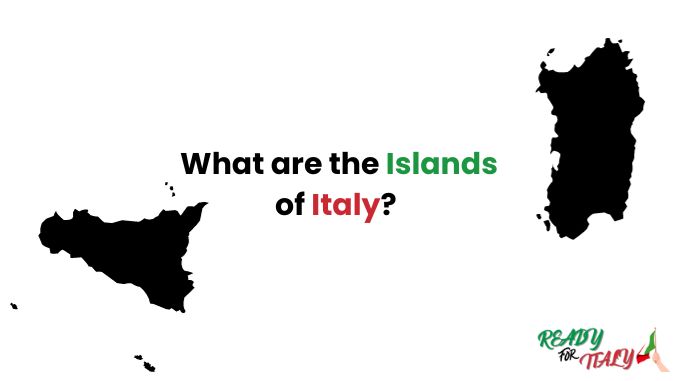
The islands have unique cultures reflecting their isolated location and foreign rule under Carthage, Greece, Rome, Byzantium, Arabs, and Spain. Both offer superb beaches, delicious cuisine, and historic towns combined with scenic mountainous interiors.
Sardinia
Sardinia is located west of mainland Italy in the Mediterranean Sea. It is known for pristine beaches, glitzy coastal resorts like the Emerald Coast, hilltop medieval architecture called “nuraghe,” and secluded coves only accessible by boat. Cagliari is the largest city and main port. Sardinian cuisine features pecorino cheese, pasta, and seafood.
Sicily
Sicily is located off the southern tip of Italy, containing active volcanoes like Mount Etna. The island has Ancient Greek and Roman ruins like the Valley of the Temples near Agrigento. Sicily’s capital, Palermo, combines Arab, Norman, and Baroque influences. Taormina and Cefalu are popular coastal hill towns for tourism. Sicilian food includes seafood, citrus fruits, cheeses and pasta.
What is the best region to visit in Italy?
The best regions to visit in Italy depend on your interests. For history and culture, the top choices are Rome (Lazio), Florence (Tuscany), and Venice (Veneto). For scenic landscapes, the Dolomites, Amalfi Coast, Cinque Terre, and Lake Como are recommended. Food lovers should visit Emilia-Romagna, Campania, Piedmont and Sicily. Regions like Umbria, Basilicata, and Le Marche offer a more authentic Italian experience away from major tourist crowds.
What is the best time to visit Italy?
The best time to visit Italy depends on the type of trip, region, and weather preferences.
- Spring (May-June) offers mild temperatures ideal for sightseeing, fewer crowds, and blooming flowers.
- Summer (July–August) brings hot, dry weather perfect for beach vacations and peak tourism.
- Autumn (September-October) provides warm weather without intense heat, plus harvesting of grapes and olives.
- Winter (November-April) has fewer tourists except around Christmas but colder rainy weather, especially in the north.

Spring and autumn tend to be the best times with pleasant weather and fewer crowds. Summer is ideal for beach trips, while winter suits those who enjoy skiing.
What is the most visited region in Italy?
The most visited region in Italy is Lazio. According to Statista.com, Lazio region attracted over 30 million visitors in 2022 and over 4.8 million monthly. This is largely due to Rome being located in Lazio. Rome is Italy’s capital and top tourist destination.
Other highly visited regions include:
- Veneto – Approximately 19 million visitors, thanks to Venice and Verona.
- Tuscany – About 15 million visitors, especially to Florence.
- Lombardy – Around 10 million visitors, primarily business and leisure travelers to Milan.
- Campania – Roughly 9 million visitors, with most heading to Naples and the Amalfi Coast.
Lazio, Veneto, and Tuscany are consistently the top visited Italian regions due to holding the country’s most famous cities like Rome, Venice, and Florence.
What is the safest region in Italy?
According to crime statistics, some of the safest regions in Italy include:
- Trentino-Alto Adige – Benefits from a high standard of living and low unemployment.
- Aosta Valley – Small, isolated mountain region with lower crime rates.
- Umbria – Peaceful rural area with a small population and limited tourism.
- Marche – Relatively little organized crime and street crime due to small cities.
- Molise – Sparsely populated and economically disadvantaged but not high in crime.
In general, rural regions in central and northern Italy tend to have lower crime rates than major cities and southern regions.
What is the most dangerous region in Italy?
The region with the highest crime rates in Italy is Campania, home to Naples and the Camorra organized crime networks. Other regions with more crime include:
- Apulia – Presence of Sacra Corona Unita mafia, especially in Foggia and Bari.
- Calabria – Base of the ‘Ndrangheta mafia operations and drug trafficking.
- Sicily – Home of the Cosa Nostra mafia.
- Lazio – Higher rates of violent crime, including assaults and robberies in Rome.
Most crime occurs in the major cities versus rural areas. Common issues include pickpocketing, bag snatching, car theft, and mafia feuds. Tourists are rarely impacted aside from petty theft.
What is the Best Region in Italy to Taste Traditional Food?
Every region in Italy has its own unique culinary traditions, but some stand out for their iconic dishes and ingredients. Recommended foodie regions include:

Hey, I’m Giovanni, an Italian that lives in Italy and the author of this website! I started this website because I like to travel, discover new places and share my knowledge about Italy with more people worldwide. I love writing about everything regarding Italy, its culture, history, and lifestyle. I hope you found value in whatever article you read, and if you have any remaining questions, don’t hesitate to contact me!

